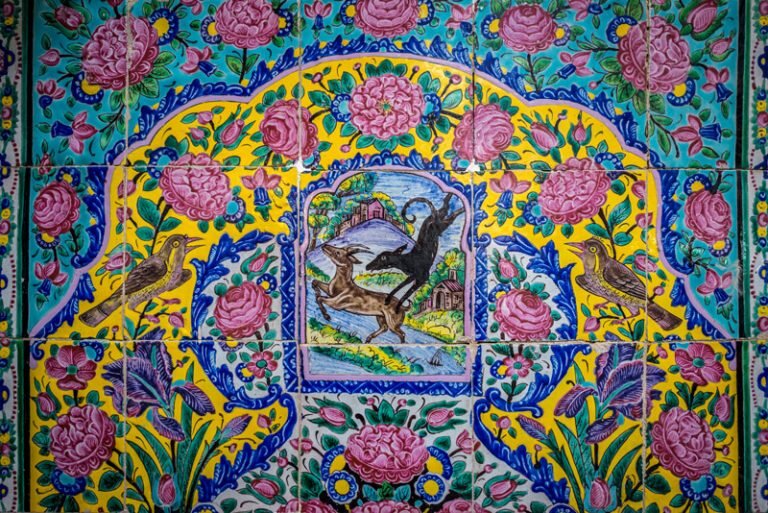Virtual exhibit offers chance to get overwhelmed with royal arts

TEHRAN – The UNESCO-registered Golestan Palace in Tehran is displaying its exquisite tilework through an online photo exhibit, Tehran’s deputy tourism chief has announced.
The week-long exhibit is intended to showcase the designs and images of the Haft-Rang (“Seven-colored”) tiles of the Qajar period (1789-1925) that are part of the Golestan Palace, Morteza Adibzadeh said on Saturday.
The exhibition presents 20 selected photos of painted tiles with images of birds, a lion hunting an animal, a battle between a lion and a dragon, and western or Persian-style mansions, the official added.
The name Haft-Rang does not imply an exact number of colors but it shifts the focus on special technics needed to make the tiles.
Today, Haft-Rang tiles are mainly made in 15 by 15 cm in almost seven colors: blue, turquoise, red, yellow, fawn, black, and white. The technic prevents the colors to be mixed into each other because they are separated by lines of a special kind of ink with oil and magnesium components.
Haft-Rang tile reached its perfection in Shiraz. Haft Rang tiles of Shiraz differ from other cities in the quality and chemical components of their glaze.
One of the best examples of using Haft-Rang tiles is Nassir ol-Molk mosque that is also called the Pink Mosque. Other architectures of Shiraz that have benefited from Haft Rang tiles are the Vakil mosque, Narenjestan mansion, and Afif Abad Garden. Moreover, a top example of Haft-Rang tiles can be found in the Golestan Palace in downtown Tehran.
A destination for domestic and international travelers, Golestan Palace is located in the heart and historic core of Tehran. The palace complex is one of the oldest in the Iranian capital, originally built during the Safavid dynasty (1501–1736) in the historical walled city.
Following extensions and additions, it received its most characteristic features in the 19th century, when the palace complex was selected as the royal residence and seat of power by the Qajar ruling family. At present, the Golestan Palace complex consists of eight key palace structures mostly used as museums and the eponymous gardens, a green shared center of the complex, surrounded by an outer wall with gates.
UNESCO has it that the complex exemplifies architectural and artistic achievements of the Qajar era including the introduction of European motifs and styles into Persian arts.
ABU/AFM
